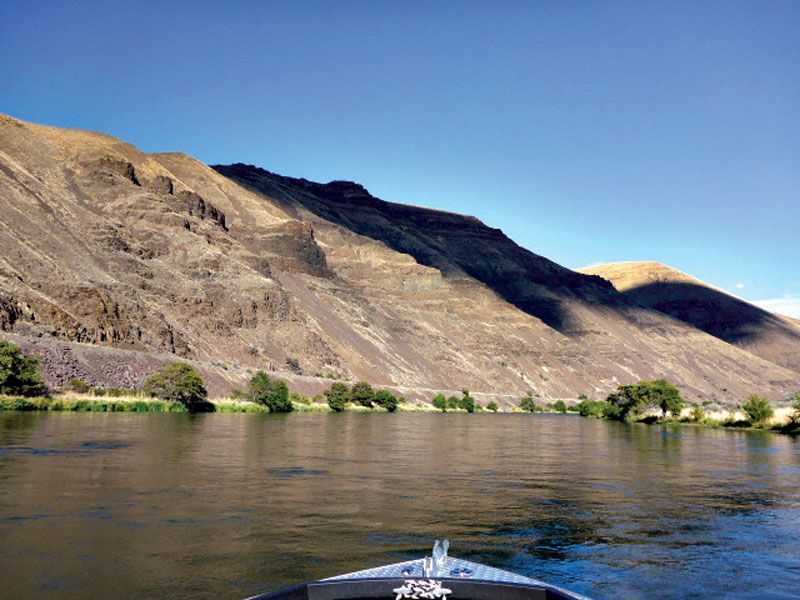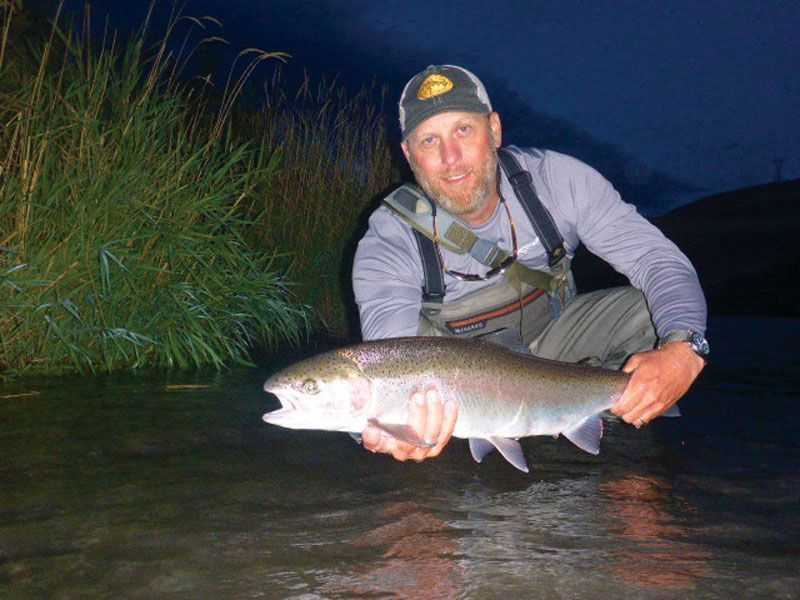Growing up in the South, fly fishing for me has always been predominantly about largemouth bass, bluegill, shoal bass, striped and spotted bass. Also, with a lot of mountain streams in the mix, trout have always been high on my list as an angler.
I’ve also made a point of traveling to tropical destinations in pursuit of tarpon, bonefish, permit and redfish. The weakest link in my fishing game is casting a two-handed rod. Whether it be switch or Spey, it seems these rods aren’t used in the Southeast, or at least very little.
In the last year or so, we have had more discussions with customers at our shop in Cartersville, Ga. about switch and Spey rods and which lines or shooting heads match up best. Selecting what you need to help your rod come to life or to match the kind of fishing you’ll be doing can be confusing. For this reason, I have always depended on the experts at Rio Fly Lines to guide me as to what will work best for our customers.
This need for knowledge is why I jumped at the chance when a buddy invited me to go swing flies on Oregon’s Deschutes River.
Louis and I landed in Portland and met up with our new friend JP, of Santa Cruz, Cali., who is a trout guide during the season in Montana. After making a couple of stops for provisions and buying our fishing licenses at the Gorge Fly Shop in Hood River, Ore., we met our guide Jeff Hickman, of Fish the Swing. We met at the mouth of the Deschutes, where it meets the mighty Columbia River, and loaded our gear in Jeff’s 18-foot modified V hull jet boat with a 175 hp outboard hanging off the back. As a jet boat owner, I was very impressed with a tiller steer 175 and couldn’t wait to see it perform.
As we started upstream to camp, we approached what appeared to be a class IV rapid. Seeing the obstacle, I assumed camp must be just short of this run, but Jeff stayed on the throttle. We shot up 6-foot standing waves like it was nothing! Welcome to Oregon! I have never witnessed anyone powering through water that big; it was truly unbelievable. With a little cold water in my face, I was getting pretty fired up about the possibility of catching a wild Pacific run Steelhead. How would it feel to hook into a fish capable of swimming upriver through what we just ran through?
After unloading at camp, we wadered up to hit the water. I admitted to Jeff that although I had casted two-handed rods before, I wasn’t very skilled.
“That’s perfect; no preconceived notions,” he said. “You are going to be just fine.”
One very interesting thing about the Deschutes is fishing from a boat is illegal, so wade fishing is your only option. After 40 minutes of casting instruction, I hooked into my first wild steelhead on the swing. I can’t even describe the power of this fish. I’ll just say my mother would not have been proud of the things that came out of my mouth at that moment. Upon finally landing this 30-inch steelhead, the feeling of accomplishment was overwhelming. I savored the moment of looking at this beautiful wild fish and watching it swim back into its natural environment.

In all types of fishing, casting is a big part of your success, but it’s only a part. To cast a two-handed rod, you must learn to anchor the fly and make the proper movements. When the timing of those movements come together, you can cast, but how do you fish the fly? Where to place the fly and when to mend for a good swing are crucial to being a successful steelheader. I am no expert, but I now have a better understanding of what it takes. I think that’s why people find it so rewarding. So many things have to come together at the right time, which leaves a huge sense of accomplishment when they do.
Louis, JP and I all landed some more fish, and several nice fish as well. I really enjoyed catching them on the swing.
We broke camp after four nights and three days of fishing. As we headed back to the airport, I reflected on how enjoyable this trip had been, fishing with good friends and doing something totally different than I had done before. Don’t be afraid to step out of your comfort zone to try something new. If you decide to pick up a two-handed rod, the Deschutes is a great place to get started.
Well, my goals were reached, I now have a lot better understanding of how to cast and fish a two-handed rod. I’m really looking forward to trying this new skill on some local stripers next season. I am totally convinced the reason I had a successful trip was our guide’s ability to instruct and my willingness to listen. You can teach an old dog new tricks… if that old dog can put what he thinks he knows in his back pocket for a while. Always listen to your guide. If they work hard for you, tip them well.
Andy Bowen is the owner of Cohutta Fishing Company in Cartersville, Ga. Check out their website at cohuttafishingco.com.
[easy-social-share]
